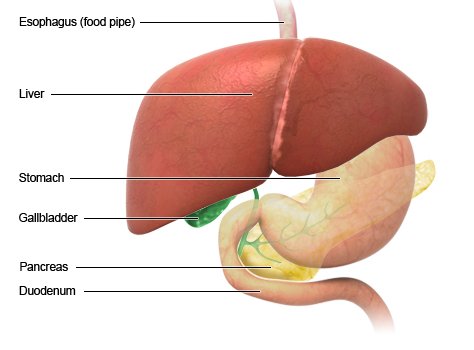How does the liver work?
The liver is one of the largest organs in the body. It has many important metabolic functions. It converts the nutrients in our diets into substances that the body can use, stores these substances, and supplies cells with them when needed. It also takes up toxic substances and converts them into harmless substances or makes sure they are released from the body.
The human adult liver weighs about 1.4 kg (3.1 pounds) and is found in the right upper abdomen, below the diaphragm. It takes up most of the space under the ribs and some space in the left upper abdomen, too. Viewed from the outside, a larger right lobe and smaller left lobe can be distinguished. The two lobes are separated by a band of connective tissue that anchors the liver to the abdominal cavity. The gallbladder, where bile is stored, is found in a small hollow on the underside of the liver.

